
sprinkler irrigation systems
Get Price Quote
Automated irrigation is a form of irrigation system that is operated by a computerized controller. This type of system is ideal for those who travel frequently and cannot attend to their lawns on a regular basis. It is also convenient and highly practical for those who have farms and large landscaped areas. Whether you are a contractor, a designer, a sports turf manager or a municipal groundskeeper, we invite you to choose your components from our wide variety of products and make every system you install a "Complete Irrigation System."We are proud to offer complete line of irrigation products whose features, performance and overall level of craftsmanship are unrivaled in the irrigation industry.

Irrigation Sprinkler
Get Price Quote
Best Deals from Agricultural Irrigation Systems
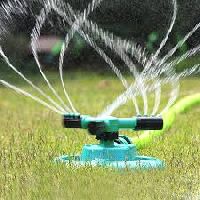
Garden Sprinkler
Get Price Quote
sprinkling angle can be adjustable, for sprinkler series connection replace end plug with tap connector, solid stable sled ,360* sprinkling angle and water pressure determine the sprinklers coverage.
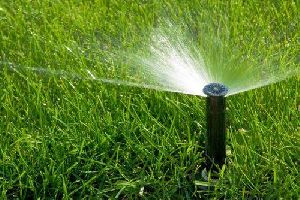
Garden Sprinkler
1,100 Per Piece

SPRINKLER SYSTEM
Get Price Quote
A fire sprinkler system is an active fire protection method, consisting of a water supply system, providing adequate pressure and flow rate to a water distribution piping system, onto which fire sprinklers are connected. Although, mainly used in factories and large commercial buildings, systems for homes and small buildings are now available at a cost-effective price. Fire sprinkler systems are extensively used worldwide, with over 40 million sprinkler heads fitted each year. In buildings completely protected by fire sprinkler systems, over 96% of fires were controlled by fire sprinklers alone Sprinklers may be required to be installed by building codes, or may be recommended by insurance companies to reduce potential property losses or business interruption. Operation: Each closed-head sprinkler is held closed by either a heat-sensitive glass bulb or a two-part metal link held together with fusible alloy. The glass bulb or link applies pressure to a pipe cap which acts as a plug which prevents water from flowing until the ambient temperature around the sprinkler reaches the design activation temperature of the individual sprinkler head. In a standard wet-pipe sprinkler system, each sprinkler activates independently when the predetermined heat level is reached. Thus, only sprinklers near the fire will operate, normally just one or two. This maximizes water pressure over the point of fire origin, and minimizes water damage to the building. Sprinkler activation will do less water damage than a fire department hose stream, which provides approximately 900 liters/min. A typical sprinkler used for industrial manufacturing occupancies discharge about 75-150 liters/min. However, a typical Early Suppression Fast Response (ESFR) sprinkler at a pressure of 50 psi (340 kPa) will discharge approximately 100 US gallons per minute (380 l/min). In addition, a sprinkler will usually activate within one to four minutes of the fire’s start, whereas it typically takes at least five minutes for a fire department to register an alarm and drive to the fire site, and an additional ten minutes to set up equipment and apply hose streams to the fire. This additional time can result in a much larger fire, requiring much more water to extinguish. Types: Deluge System: “Deluge” systems are systems in which all sprinklers connected to the water piping system are open, in that the heat sensing operating element is removed, or specifically designed as such. These systems are used for special hazards where rapid fire spread is a concern, as they provide a simultaneous application of water over the entire hazard. They are sometimes installed in personnel egress paths or building openings to slow travel of fire (e.g. openings in a fire-rated wall). Water is not present in the piping until the system operates. Because the sprinkler orifices are open, the piping is at atmospheric pressure. To prevent the water supply pressure from forcing water into the piping, a “deluge valve” is used in the water supply connection, which is a mechanically latched valve. It is a non-resetting valve, and stays open once tripped. Because the heat sensing elements present in the automatic sprinklers have been removed (resulting in open sprinklers), the deluge valve must be opened as signaled by a fire alarm system. The type of fire alarm initiating device is selected mainly based on the hazard (e.g. smoke detectors, heat detectors, or optical flame detectors). The initiation device signals the fire alarm panel, which in turn signals the deluge valve to open. Activation can also be manual, depending on the system goals. Manual activation is usually via an electric or pneumatic fire alarm pull station, which signals the fire alarm panel, which in turn signals the deluge valve to open. Operation – Activation of a fire alarm initiating device, or a manual pull station, signals the fire alarm panel, which in turn signals the deluge valve to open, allowing water to enter the piping system. Water flows from all sprinklers simultaneously. Water Spray: “Water spray” systems are operationally identical to a deluge system, but the piping and discharge nozzle spray patterns are designed to protect a uniquely configured hazard, usually being three-dimensional components or equipment (i.e. as opposed to a deluge system, which is designed to cover the horizontal floor area of a room). The nozzles used may not be listed fire sprinklers, and are usually selected for a specific spray pattern to conform to the three-dimensional nature of the hazard (e.g. typical spray patterns being oval, fan, full circle, narrow jet). Examples of hazards protected by water spray systems are electrical transformers containing oil for cooling or turbo-generator bearings. Water spray systems can also be used externally on the surfaces of tanks containing flammable liquids or gases (such as hydrogen). Here the water spray is intended to cool the tank and its contents to prevent tank rupture/explosion (BLEVE) and fire spread. Water Mist System: Water mist systems are used for special applications in which it is decided that creating a heat absorbent vapor is the primary objective. This type of system is typically used where water damage may be a concern, or where water supplies are limited. NFPA 750 defines water mist as a water spray with a droplet size of “less than 1000 microns at the minimum operation pressure of the discharge nozzle.” The droplet size can be controlled by the adjusting discharge pressure through a nozzle of a fixed orifice size. By creating a mist, an equal volume of water will create a larger total surface area exposed to the fire. The larger total surface area better facilitates the transfer of heat, thus allowing more water droplets to turn to steam more quickly. A water mist, which absorbs more heat than water per unit time, due to exposed surface area, will more effectively cool the room, thus reducing the temperature of the flame. Operation – Water mist systems can operate with the same functionality as deluge, wet pipe, dry pipe, or pre-action systems. The difference is that a water mist system uses a compressed gas as an atomizing medium, which is pumped through the sprinkler pipe. Instead of compressed gas, some systems use a high-pressure pump to pressurize the water so it atomizes as it exits the sprinkler nozzle. Systems can be applied using local application method or total flooding method, similar to Clean Agent Fire Protection Systems.

irrigation controller
9,680 Per Units

Fire Sprinklers
Get Price Quote
We are leading best Fire Sprinklers supplying company.
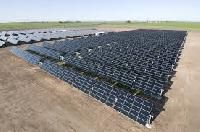
solar irrigation system
Get Price Quote
solar irrigation system, 4 KW Solar Panel System, industrial

fire sprinkler systems
Get Price Quote
fire sprinkler systems, Fire Protection Equipment, Safety Equipment
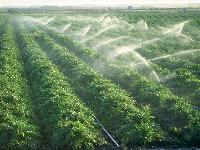
Micro Irrigation System
Get Price Quote
Micro Irrigation System, Greenhouse Irrigation System
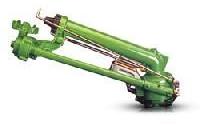
Chandraprabha: Rain Gun
Get Price Quote
Chandraprabha: Rain Gun, Multi Purpose Cooking Vessel, Mitticool Refrigerator

Chandraprabha: Rain Gun
Get Price Quote
Chandraprabha: Rain Gun, Clay Pressure Cooker

HDPE Pipe
Get Price Quote
Forged Valve, Fire Hydrants, fire & safety equipments

Emitting Pipes
Get Price Quote
Emitting Pipes